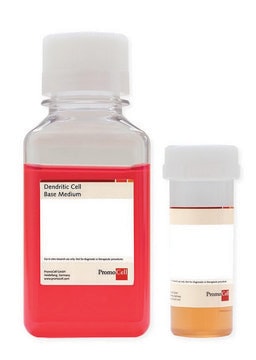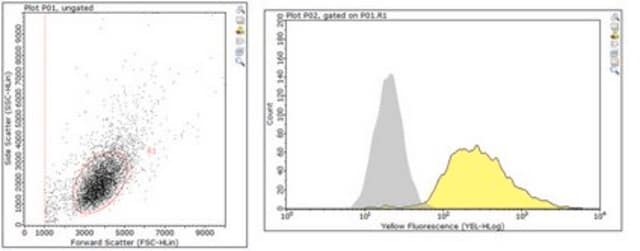SCC109
AC16 Human Cardiomyocyte Cell Line
Human
Synonym(s):
AC16 Ventricular Cardiomyocyte Cell Line
About This Item
Recommended Products
product name
AC16 Human Cardiomyocyte Cell Line, AC16 Human Cardiomyocytes can be serially passaged and can differentiate when cultured in mitogen-free medium. The cells may be used to study developmental regulation of cardiomyocytes.
biological source
human
Quality Level
technique(s)
cell culture | mammalian: suitable
shipped in
dry ice
General description
AC16 cells are proliferating and differentiation of the cells may be controlled by altering culture conditions and by silencing the expression of SV40 T-Ag . The cells can be used to study cardiac gene expression and function, during normal development and in pathological conditions at the cellular, organellar and molecular levels.
Cell Line Description
Application
Cardiac
Cardiovascular Disease
Toxicity
Quality
• Cells are tested negative for HPV-16, HPV-18, Hepatitis A, B, C, and HIV-1 & 2 viruses by PCR.
• Cells are negative for mycoplasma contamination.
• Each lot of cells is genotyped by STR analysis to verify the unique identity of the cell line.
Storage and Stability
Disclaimer
Storage Class Code
12 - Non Combustible Liquids
WGK
WGK 2
Flash Point(F)
Not applicable
Flash Point(C)
Not applicable
Certificates of Analysis (COA)
Search for Certificates of Analysis (COA) by entering the products Lot/Batch Number. Lot and Batch Numbers can be found on a product’s label following the words ‘Lot’ or ‘Batch’.
Already Own This Product?
Find documentation for the products that you have recently purchased in the Document Library.
Customers Also Viewed
Related Content
Learn how to use our cell culture tested, ready-to-use MilliShot™ single dose antibiotic solutions, conveniently packaged in one-time use vials.
Learn how to use our cell culture tested, ready-to-use MilliShot™ single dose antibiotic solutions, conveniently packaged in one-time use vials.
Learn how to use our cell culture tested, ready-to-use MilliShot™ single dose antibiotic solutions, conveniently packaged in one-time use vials.
Learn how to use our cell culture tested, ready-to-use MilliShot™ single dose antibiotic solutions, conveniently packaged in one-time use vials.
Our team of scientists has experience in all areas of research including Life Science, Material Science, Chemical Synthesis, Chromatography, Analytical and many others.
Contact Technical Service







